
 Joel and Ethan Coen’s O Brother, Where Art Thou? (2000) advertises itself as an adaptation of The Odyssey. Dr. Roger Macfarlane (Department of Comparative Arts and Letters) is just as interested in exploring the ways in which the film does not line up with Homer’s epic poem as in the ways in which it does.
Joel and Ethan Coen’s O Brother, Where Art Thou? (2000) advertises itself as an adaptation of The Odyssey. Dr. Roger Macfarlane (Department of Comparative Arts and Letters) is just as interested in exploring the ways in which the film does not line up with Homer’s epic poem as in the ways in which it does.
But, before jumping into epic poetry at last week’s IC lecture, Macfarlane talked about another text that O Brother, Where Art Thou? is adapting: Preston Sturges’s Sullivan’s Travels (1941). Sullivan’s Travels is one of the great comedies from the classical Hollywood period. It follows a director of second rate comedies who is trying to convince his producers to let him make a film of social importance. They claim that he doesn’t know suffering so Sullivan sets out on a journey to learn what life is really like outside of his protected, affluent bubble. The film he wants to make is titled, O Brother, Where Art Thou? Macfarlane pointed to one instance, besides the title, which serve as points of contact in the Coen Brothers’ film to Sturges’s: the cinema. In Sullivan’s Travels, one of the climactic scenes is of a group of prisoners brought into a church to watch a film. This image of prisoners entering a darkened theater is mirrored in the Coen Brothers’ film when a chain gang shuffles in to watch a movie in an actual theater. This visual match clues viewers into understanding O Brother, Where Art Thou? through the themes of Sullivan’s Travels—a film which Macfarlane highly recommended viewers also see this week at the International Cinema.
There are a few gimmes for reading O Brother, Where Art Thou? as an adaptation of The Odyssey. Firstly the character names overlap. George Clooney plays our main character named Ulysses Everett McGill has Odysseus’s Latin name, and the two characters are very similar. Penny Wharvey-McGill (Holly Hunter) also mirrors Penelope. Others diverge quite a bit though, such as Menelaus “Pappy” O’Daniel who does not fit with the Menelaus character in The Odyssey. John Goodman’s character wears an eyepatch and is very similar to the cyclops, Polyphemus, they are even maimed in similar ways with burning pieces of wood. The sirens are also a straightforward adaptation with singing women luring the men away from their quest and leading them to be killed.
While many of these elements line up nicely, Macfarlane observed that the film also contains a number of less direct adaptations. Such as, “why is there a bust of Homer in the background of the ‘Pappy’ O’Daniel character introduction?” and “Who is the blind railroad man? … He matches Tiresias visually but not thematically.”
One less obvious adaptation of Homer is the use of the song “Man of Constant Sorrow” sung by Ulysses and his pals in the film. The song’s title is a reference to Odysseus’s name, which is a pun on the verb in Greek meaning “to suffer” or “to cause suffering.” Additionally, during The Odyssey, Tiresias tells Odysseus that before he can find rest, he needs to carry an oar in land far enough to find a people who do not recognize its use. There he needs to establish a cult of Poseidon. Macfarlane read this instance as the referent for the music in the film generally, because the music is all from outside of Mississippi and more akin to the music of Appalachia.
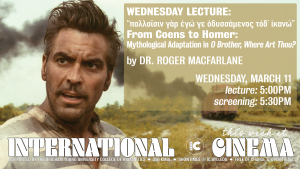 Lastly, Macfarlane pointed to one of the most discussed aspects of the film, its digital color-grading, a process that has since become ubiquitous. O Brother, Where Art Thou? was the first feature film to be entirely, digitally color corrected. The use of digital filters turns an otherwise intensely green Mississippi into a dusty depression era setting steeped in images and ideas from the past. Macfarlane read this not only as a visual aspect of the film but as a type of adaptation as well. Homer likewise was dealing with the past when he wrote The Odyssey around 740 BC referring to events in the Troyan war that took place over four hundred years earlier in 1184 BC. Homer is writing an ancient tale and similarly the color correction of the film acts a method of distancing and mythologizing its narrative in a nostalgized past.
Lastly, Macfarlane pointed to one of the most discussed aspects of the film, its digital color-grading, a process that has since become ubiquitous. O Brother, Where Art Thou? was the first feature film to be entirely, digitally color corrected. The use of digital filters turns an otherwise intensely green Mississippi into a dusty depression era setting steeped in images and ideas from the past. Macfarlane read this not only as a visual aspect of the film but as a type of adaptation as well. Homer likewise was dealing with the past when he wrote The Odyssey around 740 BC referring to events in the Troyan war that took place over four hundred years earlier in 1184 BC. Homer is writing an ancient tale and similarly the color correction of the film acts a method of distancing and mythologizing its narrative in a nostalgized past.


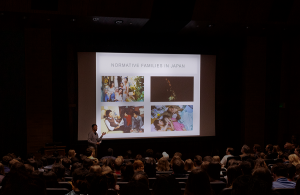 “We often think of class conflict as a product of distance but in Bong’s films this sense of class conflict is a product of
“We often think of class conflict as a product of distance but in Bong’s films this sense of class conflict is a product of 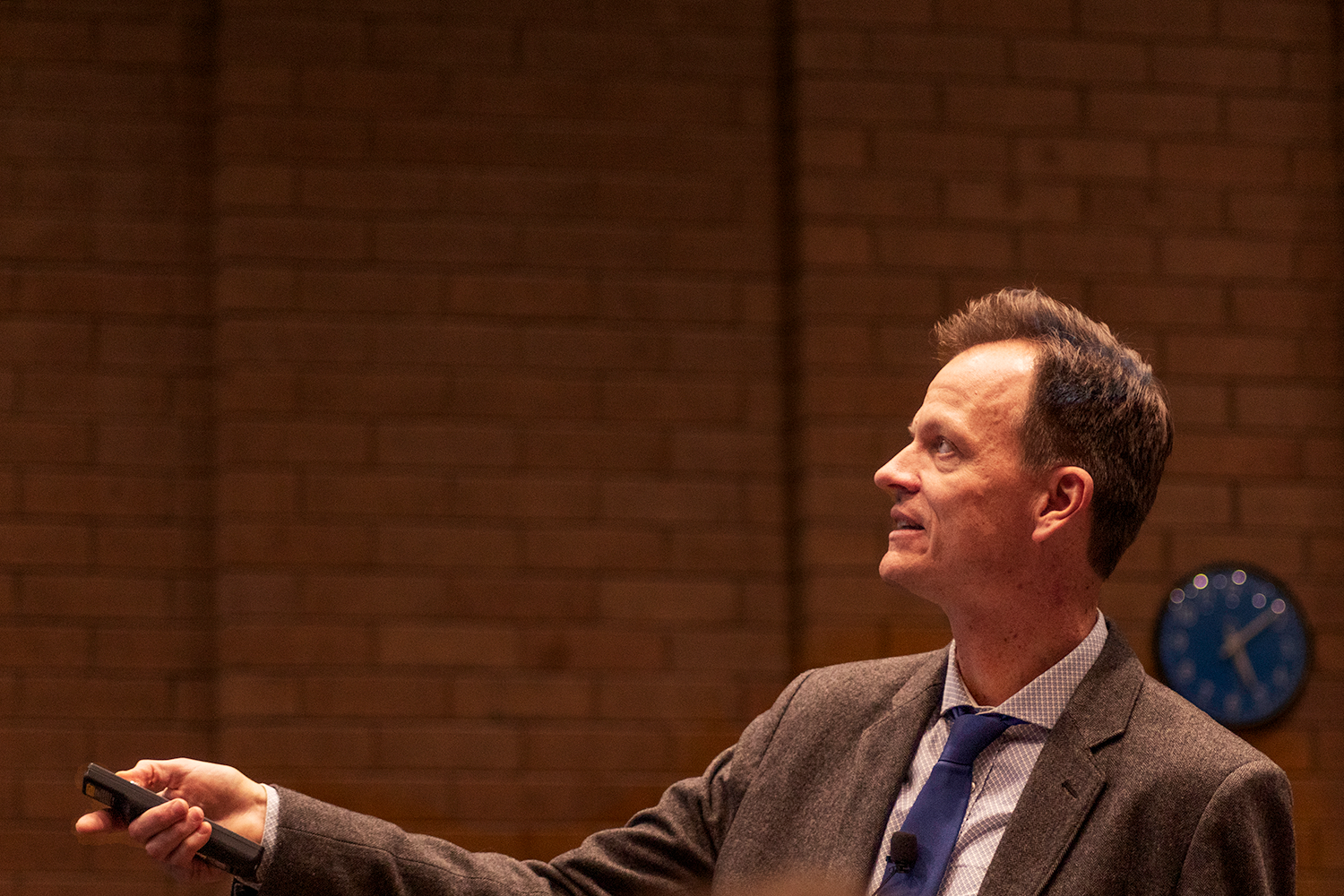
 The Arctic is
The Arctic is 

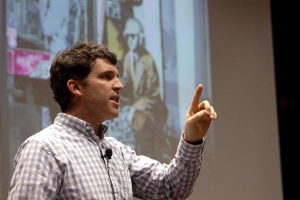 “Would Banksy have been as well known and liked twenty years ago before social media?” asked Dr. James Swenson (Department of Comparative Arts and Letters). Because Swenson was lecturing on
“Would Banksy have been as well known and liked twenty years ago before social media?” asked Dr. James Swenson (Department of Comparative Arts and Letters). Because Swenson was lecturing on 
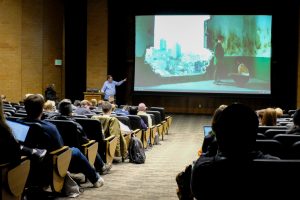 Still Life
Still Life  “Who might be the ‘good people’ in this movie?” asked Prof. Riep. The film begins by following a man from Jia’s home province Shanxi who comes to Fengjie to find his ex-wife. He gets a job as a part of the city’s demolition working to dismantle the thousands of buildings needed to be raised or moved for the reservoir. Modernizing China, Riep suggested, has led to the tearing down of many old areas to relocate them and usually to replace them with more dense high-rises to accommodate the country’s urbanization. Unlike the sort of creative destruction suggested by Western modernists, these buildings are destroyed not to be replaced with anything other than water.
“Who might be the ‘good people’ in this movie?” asked Prof. Riep. The film begins by following a man from Jia’s home province Shanxi who comes to Fengjie to find his ex-wife. He gets a job as a part of the city’s demolition working to dismantle the thousands of buildings needed to be raised or moved for the reservoir. Modernizing China, Riep suggested, has led to the tearing down of many old areas to relocate them and usually to replace them with more dense high-rises to accommodate the country’s urbanization. Unlike the sort of creative destruction suggested by Western modernists, these buildings are destroyed not to be replaced with anything other than water.
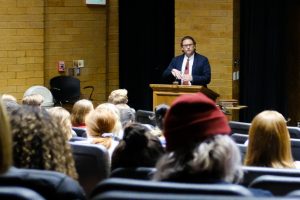

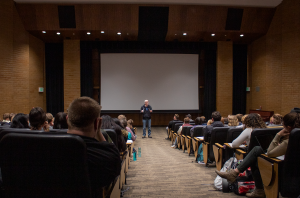
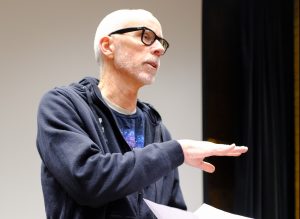 In film school, which was relatively new, Coppola studied film both practically and critically. He watched all the great American and foreign films from the festivals and learned how different lenses, angles, sounds, etc. affect audiences. Despite rather disliking the novel, Coppola was sought after to direct
In film school, which was relatively new, Coppola studied film both practically and critically. He watched all the great American and foreign films from the festivals and learned how different lenses, angles, sounds, etc. affect audiences. Despite rather disliking the novel, Coppola was sought after to direct 
